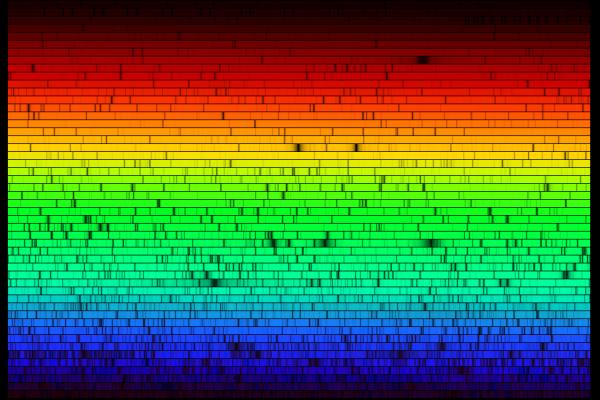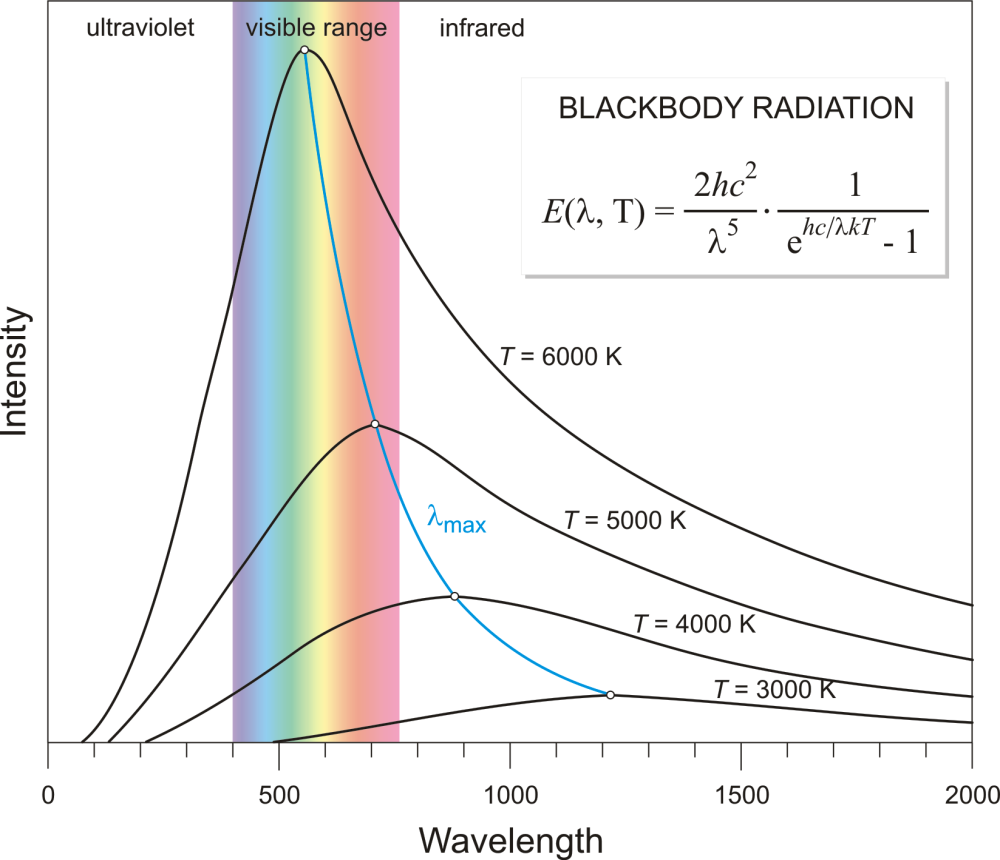Do you ever wonder how we know what we do about stars? The closest stars besides our sun (Alpha Centauri) are 4.4 lightyears away which may not seem far away, but they aren’t the only stars we have data for. We know all about stars that are farther away. And even if distance weren’t an issue, our technological limitations would be. We can’t just stick a thermometer in a star to read its temperature. So how do we know things like distance, luminosity and temperature?

The answer is in the picture above and others like it. This is the absorption line spectrum of the Sun. From this, we can determine the temperature and using that temperature we can find total energy emitted (and therefore Luminosity– total energy(W/m^2) x area (m^2)).
There are two relevant equations and they both apply to Blackbody Radiation. An object is a blackbody if:
- It’s opaque and at thermal equilibrium
- No net transfer of heat occurs
Blackbodies have the following radiation properties:
- They emit light at all wavelengths
- Emit more light at all wavelengths as they get hotter
- Their EM spectrum always follows Planck’s Law

But where do we get temperature? Wien’s Law!

It’s as simple as that! Pretty cool, huh?
